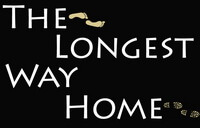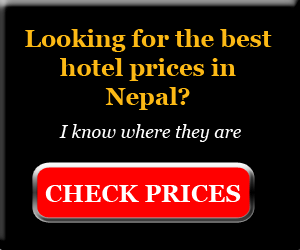About your first time in Nepal
Nepal is a fantastic country to visit on many levels. However, if you've never been to Nepal before there are several things you should prepare yourself for on your first visit e.g. what to expect, how dirty it can be, how easy is it to book a hotel along with some suggestions on where and what to see, your itinerary.
Nepal can be a hectic sensory overload to those who have never been to the country before or for those that have never been to Asia before.
Here are the essentials to familiarize yourself with:
All about visting Nepal for the first time
» Booking tours or treks before arriving » Electricity Problems
» Arriving into Nepal for the first time
Each link on this page will take you to a more in-depth informational guide or page on that subject within this website if you want to learn more about it.
Understanding a little about Nepal before you arrive
Nepal is an independent landlocked country sandwiched between India and Tibet (China) with an 80-90% Hindu, 8% Buddhist population with the rest of the population being Newari and other indigenous groups. While many rural people are largely impoverished, there is still wealth within Nepal coming from overseas workers and corruption within the country.
A large proportion of Nepal is dedicated to tourism with trekking in the Himalayas being the most popular activity followed by iconic cultural heritage, jungle, wildlife and adventure activities.
Nepal has issues with electricity, sanitation, corruption and infrastructure yet still retains an immense charm, beauty, honesty and adventure that keeps tourists coming back.
Do read this full free guide to Nepal for more in-depth information on Nepal.
Before you arrive
For a first-time visitor to Nepal, you'll probably have a lot of questions running through your head. Most will hopefully be answered on this page. If not, feel free to contact me – however, do please read through this page to make sure if your question has been already answered. Understanding Nepal and preparation are key to making the most out of your journey to Nepal.
Culture shock!
Nepal has a culture unlike any other on the planet. A tantric mix of religions, beliefs and economic pivots. Rather than challenging it all you are far better to just go with the flow. Take it all in while marveling at ancient buildings that merge haphazardly with modern yet crumbling brick and concrete constructions.
You will see poverty along the streets. Electrical wires will dangle from lampposts like black ropes as the traffic and pollution bring things to a halt. Then you'll see the people smiling and welcoming you among unique old temples, lively markets and pristine mountains making it all suddenly feel wonderful.
When in Nepal for the first time: Just remember, go with the flow.
When to go
You can visit Nepal at any time. However, if you are going primarily to see or do something specific e.g., trekking, seeing a royal Bengal tiger or simply to meditate, then do note that there are better times of the year for most of these things.
To get a better idea, do see when is the best time of year to visit Nepal
What to pack for Nepal
Nepal has 5 seasons with different weather ranges for each one. Depending on when you are going, you'll need to adjust your packing list for each season plus take into account what you intend to do in Nepal. For a trekking holiday, will be different to a jungle holiday in terms of packing lists. Do see this packing list for Nepal.
One of the most important things to remember when packing is the electrical outages and load shedding in Nepal. Bring backup batteries and power banks if you have a lot of devices. Also, bring a head-torch.
Secondly, bring your own medication to Nepal. While pharmacies are everywhere, you won't always get what you need, and counterfeits do exist.
If you are going trekking, don't worry about having to carry everything. You can either hire a porter or leave most of your luggage in your hotel. Hotels won't charge if you stay a few nights there. Laundry services in Nepal are not the best. Most hotels charge by the kilo or by piece, which is more expensive. Learn more about trekking in Nepal.
Electricity problems in Nepal
Power cuts are frequent in Nepal and this usually irritates many tourists who are not prepared for them. Nepali people are also annoyed by it.
 Daily “load-shedding” means you can be without power for several hours a day and night. Kathmandu city is now largely free from load shedding. Most good hotels (high-range) will have generators. For everyone else, all other hotels will at least have a battery backup that will supply one or two light bulbs in your room – but no charging.
Daily “load-shedding” means you can be without power for several hours a day and night. Kathmandu city is now largely free from load shedding. Most good hotels (high-range) will have generators. For everyone else, all other hotels will at least have a battery backup that will supply one or two light bulbs in your room – but no charging.
While surges are rare, it helps to have a surge protector. The standard voltage in Nepal is 230 V. The standard frequency is 50 Hz. Newer hotels have multi-adapter style sockets while older hotels generally have a two-prong European style socket.
In 2016, most of the load shedding in the main cities was fixed. However, power cuts do still happen. Be prepared for them. This is especially true in smaller towns. Up in the mountains, most people will have solar panels and a big battery. Do expect to pay for charging items when trekking.
All hotels will have a timetable of load-shedding for the week. It's worth taking a note of the times. Otherwise, you can download an app with a load-shedding schedule in Nepal.
What to see & do
There's a lot to see and do in Nepal. Do visit my free and best travel guide to Nepal for everything you need.
Also, do check out the 7-day itinerary for Nepal and the two-week itinerary for Nepal.
Diet & eating out in Nepal
Let's start by saying this: DO NOT eat street food in Nepal. It is not the same as the rest of Asia. Street food in Nepal is not refrigerated nor heated. Most people get very sick from trying street food in Nepal.
 Stick to restaurants which have generators (refrigeration) and keep to food that has been sourced locally and cooked hot. Lack of refrigeration due to poor electricity supplies and sanitation are a major contributor to food-borne illness in Nepal.
Stick to restaurants which have generators (refrigeration) and keep to food that has been sourced locally and cooked hot. Lack of refrigeration due to poor electricity supplies and sanitation are a major contributor to food-borne illness in Nepal.
Locally sourced foods are fresh vegetables, chicken, fish, and pork.
Forget about asking for gluten-free, celiac, or lactose-free meals. It's veg or non-veg in Nepal. And "everything" is organic.
Foods that are worth avoiding include anything that may be frozen at some stage. e.g., prawns and other shellfish. Mutton can also be problematic as can ice-cream. Eat salads at your own discretion.
While many restaurants will claim they use filtered water to clean salads with, check for yourself that they do. Eat fruit only with its peel still on and wash it yourself in bottled or purified water.
Drink only bottled water. NEVER drink water from the tap in Nepal and use bottled water to brush your teeth. Tap water is not treated in any way in Nepal.
Do not expect anything near Michelin Guide level menus or dishes in Nepal. However, do enjoy the fresh wholesome foods like momos and dal bhat along with great vegetarian selections. Do check out my post on what Nepali food is like.
Generally, you can judge a restaurant by its initial cleanliness and if it's busy or not. A busy clean-looking restaurant is generally a good sign that the food is good and safe.
Don't tip! Nepal is not a tipping country, and this practice only came about by north-American tourists. There's a 10% service charge added to bills, and 13% VAT is also added in all tourist restaurants.
Sanitation in Nepal
Nepal has some of the worst sanitation in Asia. Public toilets, if you can find them, are usually quite disgusting. Private toilets in restaurants can leave a lot to be desired.
Bring antibacterial wipes with you as there is usually no toilet paper and sometimes no water. While the vast majority of toilets are western style, some squat toilets are still in use and are more prevalent when trekking.
Bringing hand sanitizer with you at all times is advisable. Again, avoid swallowing all tap water and be conscious to avoid ice.
Raw sewage on the streets in the rainy season is commonplace, so avoid open shoes or sandals in such areas.
Disinfectant is not used widely in Nepal. High-end hotels are generally clean but perhaps not to a high-end hotel back home's standard.
Medical issues in Nepal
Bring your own medical supplies and consult with a doctor about your intent on visiting Nepal regarding vaccinations.
It is extremely important you get adequate travel insurance for Nepal. Failure to have travel insurance in Nepal will result in you having to pay inflated “tourist” hospital fees which run into the thousands.
Moreover, if you are going trekking, then you'll need to have travel insurance that will cover you above certain altitudes. Here is my recommendation for travel insurance in Nepal.
Crime in Nepal
There's little to no petty crime to speak of against tourists in Nepal. Like in most places, do lock up your valuables and don't be seen with wads of cash.
Most “crime” towards tourists in Nepal is carried out at a service industry level. Volunteers are often fleeced of cash from orphanages and lately women's groups.
The first step in avoiding these problems is to ask to see the organization's accounts – this usually scares off most organizations.
The second step is to read about the pitfalls of volunteering in Nepal.
Women travelers will be glad to know that Nepal is a much safer and less harassing place to travel alone than many other countries including India. Do read solo female travel in Nepal.
Every year solo trekkers go missing in Nepal. Most take trekking in Nepal for granted, do not take a guide and go off exploring on their own. A simple ankle strain can render a person with a death sentence out in the open mountains.
Choosing a trekking guide can not only help save your life but also enhance your trekking experience. Learn more about how to choose a trekking guide in Nepal.
Booking tours or treks before arriving in Nepal
A common question I get asked is “Should I book a tour or trek online?” This is usually followed up with exasperated notes about there being too much information out there to make sense of it all, high prices, a worry about scams and wanting one's money to go into the local economy rather than a big international tour company.
 All of the above is correct. I've been there myself many times over. Booking online via a big international company usually means paying a higher price, having less control, seeing your money go to a large company and not being sure who your trek or tour with.
All of the above is correct. I've been there myself many times over. Booking online via a big international company usually means paying a higher price, having less control, seeing your money go to a large company and not being sure who your trek or tour with.
The only real benefit to booking online before you arrive is if you are seriously stuck for time and want the security of booking with an international company who may be headquartered in your own country. If this is what you are looking for then I've already listed out the best in online Nepal treks and tours.
If you are looking for a local but fully qualified, registered and insured guide that I used then feel free to contact me. That said, all my recommendations for guides in Nepal are written with contact details, maps, and reviews in my guidebook to Nepal so making a purchase first before contacting me would be appreciated.
Arriving into Nepal for the first time
Most people fly into Nepal via the country's only international airport in Kathmandu. Both domestic and international flights are often delayed. Do read about arriving into Kathmandu international airport.
For people arriving by land, do read travelling to Nepal overland. If you've never been to Nepal before then booking your first two nights in a nice hotel is a good way to arrive. Some even offer an airport pick-up. Do check out my list of recommended accommodation in Kathmandu.
See getting around Nepal for information on taxies and transport. The roads and pavements in Nepal are broken and not wheelchair accessible by any means. Pedestrian crossings exist but rules are not adhered to.
There are street children in Nepal, beggars, and touts, all of which you should avoid handing things to. Do read more about street children in Kathmandu.
Nepali people are very friendly and asking for directions is not a problem. Saturdays are government holidays but all tourist facilities remain open.
If you have a dust allergy then come prepared. Dust masks are becoming the norm in Nepali cities these days.
Getting around Nepal
Taxies are metered but they are rarely used. They are also quite small so if there's more than two of you then it can be a squeeze so two taxis are often needed.
You can book bus tickets from most hotels but they will usually add-on a commission. Some travel agents will add a commission too. Most tourist buses do not have an office you can just walk into to buy a ticket. So save yourself some time and just get three prices and pick the one that suits you.
Domestic flights are relatively frequent but often delayed. Virtually every travel agent in Thamel or Lakeside can arrange a domestic flight ticket for you. Do avoid trying to book domestic flights online as many sights are either bogus or don't work or are not secure for credit card transactions.
Taking tourist buses to popular destinations is quite easy. But do be aware of some scams. As an example, do read my Kathmandu to Pokhara bus guide.
With all forms of transport in Nepal, you'll need to agree on a price first. Never get in any form of transport without knowing the price first. More tips like this are available in my Nepal guidebook (you can literally save yourself the cost of the book within a day in Nepal with these tips).
Dealing with Nepali people for the first time in Nepal
In general, Nepali people are very laid-back, friendly, and caring. Your privacy is usually upheld, and no one will annoy you by asking too many questions.
The exceptions here are tour touts who can be dismissed by a shake of the head and generally not engaging with them.
 Nepali men do not cause problems for female tourists with none of the loitering or comments that one might get in India. The exception here are the Lothario trekking guides who are more inclined to woo a lady off her feet with charm than be crude about it. There is a lot of bed-post notching though, so don't fall for the humble charms of a guide!
Nepali men do not cause problems for female tourists with none of the loitering or comments that one might get in India. The exception here are the Lothario trekking guides who are more inclined to woo a lady off her feet with charm than be crude about it. There is a lot of bed-post notching though, so don't fall for the humble charms of a guide!
Bargaining comes part and parcel with Nepal. Fixed price never really means fixed price. The exception here is if the price is already very low. A USD $2 scarf will rarely be had for less unless you are buying ten of them together.
Don't lose your temper! It's easy to do if you don't come prepared to Nepal. However, losing one's temper in Nepal or shouting will usually make matters much worse as it's highly insulting and actually is regarded as an act of stupidity.
Reasons to enjoy first-time travel to Nepal
The vast majority of people enjoy their trip to Nepal. In fact, many people enjoy it so much they come back time and time again.
For first-time visitors, Nepal offers a plethora of incredible sights and experiences most often not found in such close proximity elsewhere in the world.
Nepal is a trekkers' paradise from epic Everest treks to long-duration Annapurna circuits or for some short-duration treks with tantalizing views or even just hill walks under the Himalayan mountains. Read my trekking guides to Nepal.
 Wildlife enthusiasts will savor the thoughts of deep jungle treks filled with wild Indian elephants, one-horned rhinos, and the elusive royal Bengal tiger, not to mention hundreds of birds, butterflies, and fauna to be seen. Read travel guides to Chitwan and Bardia.
Wildlife enthusiasts will savor the thoughts of deep jungle treks filled with wild Indian elephants, one-horned rhinos, and the elusive royal Bengal tiger, not to mention hundreds of birds, butterflies, and fauna to be seen. Read travel guides to Chitwan and Bardia.
Only opened up since the 1950s, Nepal's cultural heritage is architecturally unique. Multi-tiered Newari, Hindu, and Buddhist temples are all in use today as they intermingle with ancient cobble stone streets bustling with open markets. Read my travel guides to the Kathmandu Valley.
Adventure seekers will feel their adrenaline surge at the aspect of paragliding over pristine mountains, white water rafting in Himalayan waters, zip-lining, canyoning, horse riding, or taking a big classic motorbike out. Read my travel guides to Pokhara.
Those seeking meditation and spirituality can find all manner of mindful activities in Nepal, where the Buddha was born. Not only does Lumbini offer a chance to visit Buddha's birthplace, but there are over 23 Buddhist monasteries there from around the world, along with classes in all manner of spirituality throughout Nepal. Read my travel guides to Lumbini.
Though a cliché, the people of Nepal often become a first-time visitor's favorite aspect of the country. Friendly, honest, and fun-loving, very rarely does a person leave Nepal without making new friendships.
Get my Guidebooks to make the most out of your time in Nepal!
Liked this page? You'll love my books!
100% independent guidebooks, with no sponsored trips or ads. Designed to help travelers get the most out their trip to Nepal with premium detailed guides, insider information, impartial hotel and restaurant reviews, complete trekking routes, dedicated heritage walks & much more ...
Available in print or digital editions - the best guidebooks for visiting Nepal.
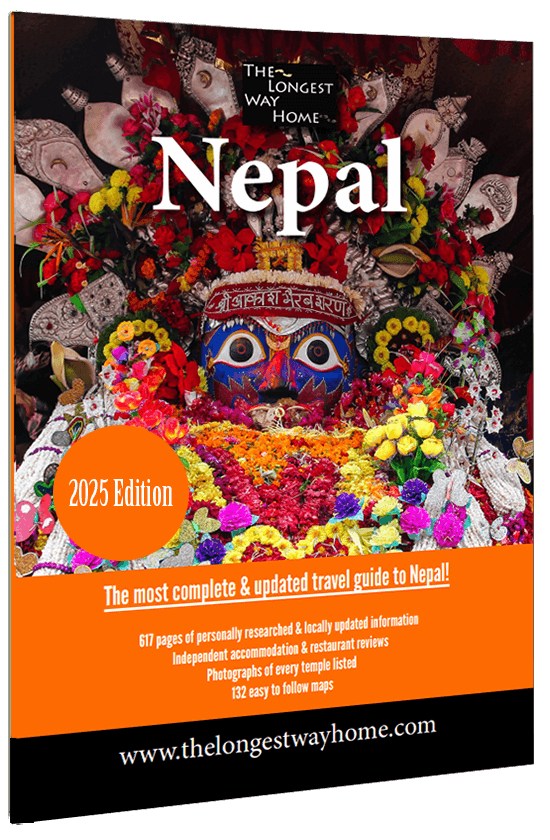 |
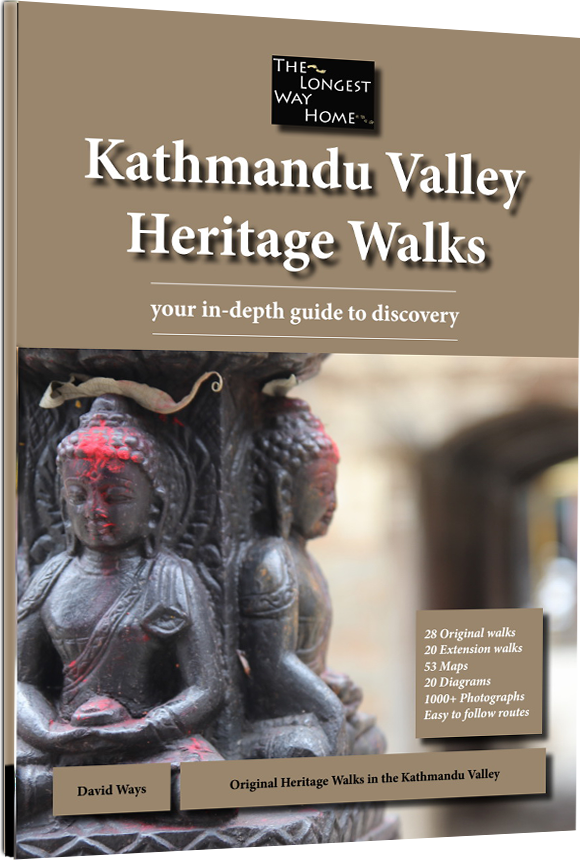 |
Full Nepal Guidebook
|
Kathmandu Valley Heritage Walks
|
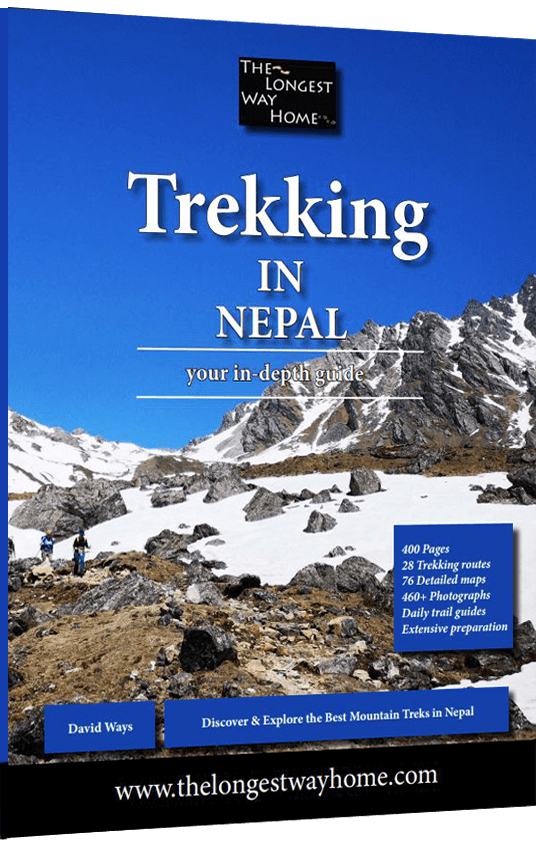 |
Trekking in Nepal |
Was this page helpful to you? If so please tell others!

